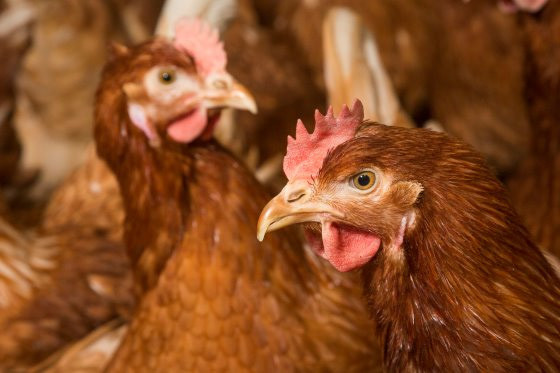Welfare of layers in cages explored

Latest Danish research on the welfare of layers in cages has shown a deterioration of plumage and keel bone damage accelerates, as birds get older.
The research, published this month in the British Poultry Science journal, assessed on-farm keel bone, feet, plumage and skin damage in layers in small furnished cages in a bid to evaluate welfare implications.
A total of 13 farms participated, all housing Lohmann LSL layers in systems allowing 8 or 10 hens per cage.
Each flock was visited at three different ages – 32, 62 and 77 weeks. During each visit, 100 hens were examined for keel bone fractures and deviations, plumage damage, body wounds, foot pad lesions, bumble feet, missing toes and toe wounds.
The study, carried out by the Department of Animal Science at Aarhus University for the Danish Ministry of Environment and Food, found a deterioration with age of the condition of the plumage and keel bone (P<0.001).>
At 77 weeks of age, 16% of the birds had poor plumage and 43% of the birds had keel bone damage.
In contrast, food pad lesions were most prevalent at 32 weeks of age when 13% of the birds were affected.
Other foot injuries and body wounds remained at a relatively low level throughout the three ages examined.
The researchers said: “Prevention of damage to the keel bone, plumage and foot pads should therefore be considered when aiming to improve welfare of laying hens housed in small furnished cages.”
Earlier research review
The study builds on work by the researchers on keel bone damage that was published in the scientific journal Frontiers in Veterinary Science earlier this year.
That research suggested that while the reason underlying keel bone fractures remained ambiguous, breeding for production and feed efficiency probably played a role due to the modern hen having small breast muscles, a low body weight and producing eggs from an early age.
Researcher Anja Brinch Riber said layers with keen bone fractures produced fewer eggs and other studies suggested they were experiencing pain.
In behavioural tests, egg layers with keen bone fractures have been shown to be reluctant to jump from their perches to achieve a mealworm treat and the birds also spend less time sleeping on the perches, resting more on the floor.













